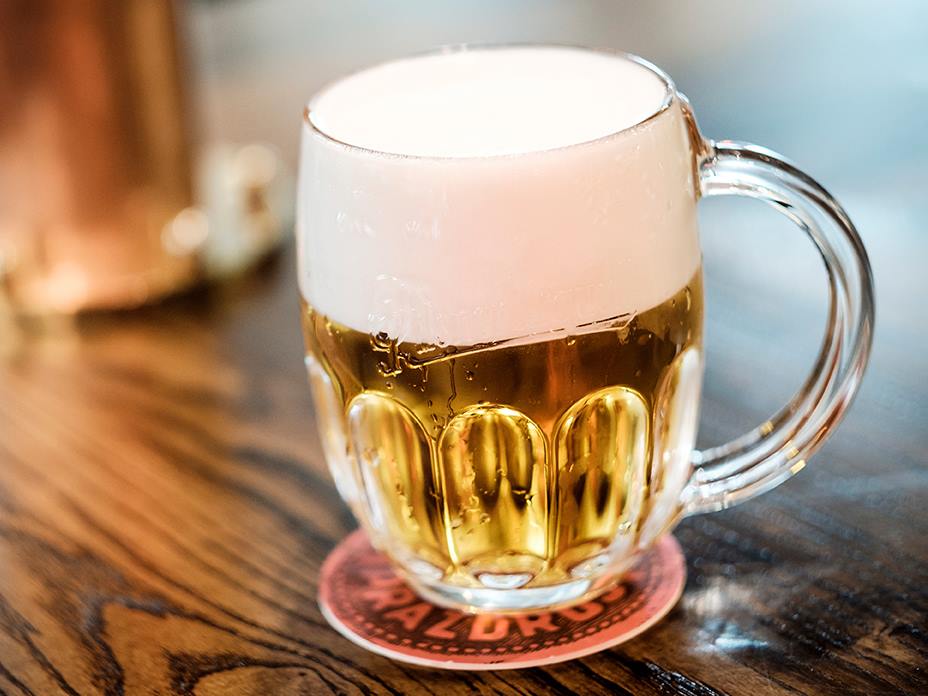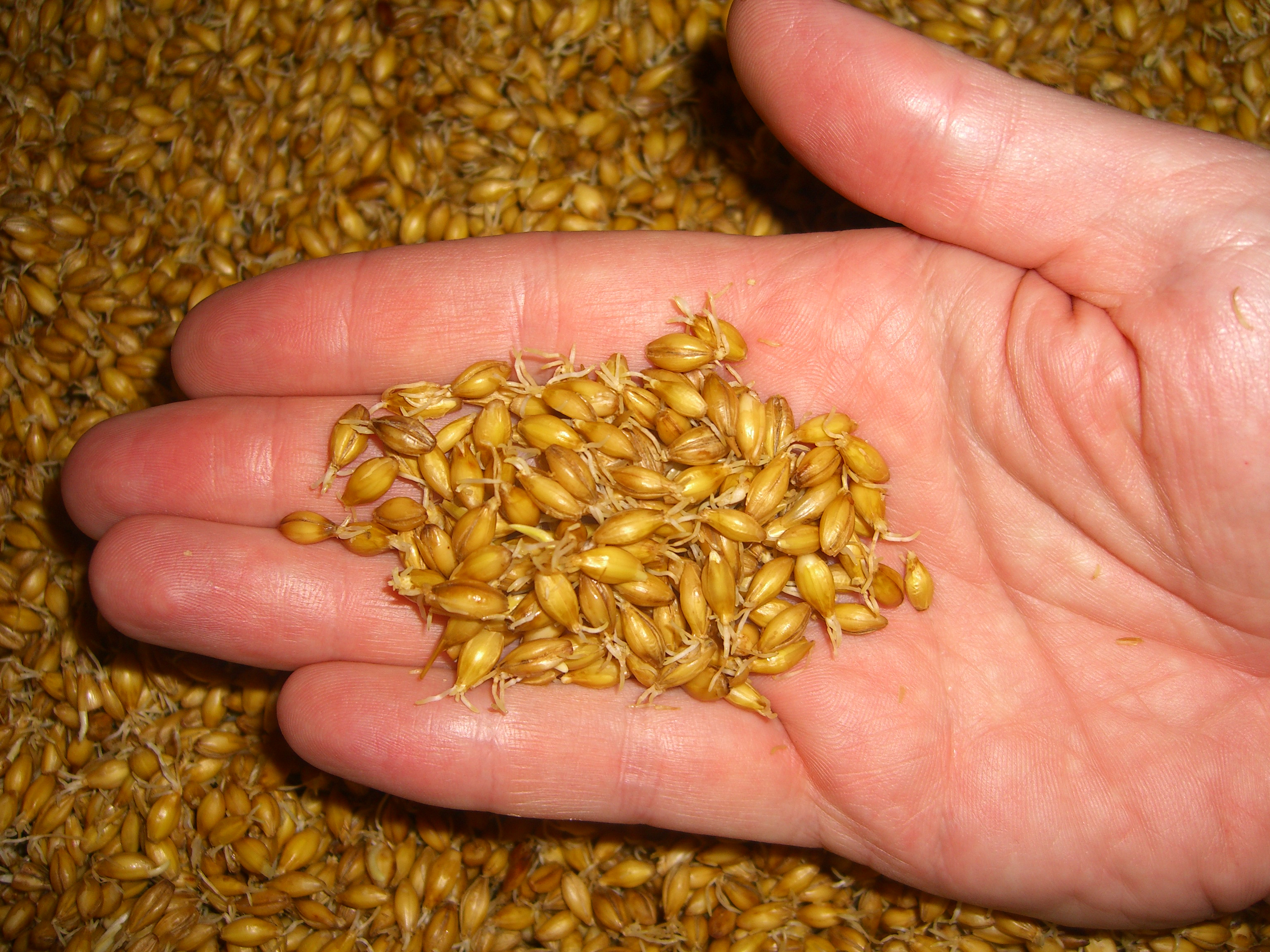|
Amstel Brewery
Amstel Brewery ( nl, Amstelbrouwerij, ) is a Dutch brewery founded in 1870 on the Mauritskade in Amsterdam. It was taken over by Heineken International in 1968, and the brewing plant closed down in 1982, with production moving to the main Heineken plant at Zoeterwoude. History The brewery was founded by Charles Antoine de Pesters (1842-1915), Johannes Hendrikus van Marwijk Kooy (1847-1916) and Willem Eduard Uhlenbroek (1839-1880). De Pesters and Van Marwijk Kooy were brothers-in-law, both coming from very affluent Amsterdam families. Uhlenbroek's father owned a small sugar refinery in Amsterdam. The brewery was named after the Amstel River. The brewery's symbolic first stone was laid on 11 June 1870. The first brew was completed on 25 October 1871 and months later, on 9 January 1872, the first beer was delivered to clients. The brewery was officially opened on 15 January 1872.Peter Zwaal, ''The history of De Amstel Brouwerij since 1870'' (Amsterdam : Bas Lubberhuizen, 2010) ... [...More Info...] [...Related Items...] OR: [Wikipedia] [Google] [Baidu] |
Zoeterwoude
Zoeterwoude () is a municipality in the province of South Holland, Western Netherlands. It covers of which is water. It had a population of in . Located to the southeast of Leiden and north of Zoetermeer, the municipality of Zoeterwoude consists of Gelderswoude, Weipoort, Westeinde, Zoeterwoude-Dorp, Zoeterwoude-Rijndijk and Zuidbuurt. Topography ''Dutch topographic map of Zoeterwoude, Sept. 2014. Click to enlarge.'' History The name Zoeterwoude is first mentioned in a document from 1205, which references a certain "Florentius van Sotrewold". It is uncertain if this is a reference to the village. The first confirmed existence is from 1276 when Dirk van Santhorst received the "Soetrewold" fiefdom from Floris V, Count of Holland. Its municipal boundaries were set circa 1300. At that time it was one of the largest municipalities in the Netherlands, but later much land was annexed by surrounding cities, notably Leiden. In 1450, the first bridge between Leiderdorp and Zoeterwou ... [...More Info...] [...Related Items...] OR: [Wikipedia] [Google] [Baidu] |
Jordan
Jordan ( ar, الأردن; tr. ' ), officially the Hashemite Kingdom of Jordan,; tr. ' is a country in Western Asia. It is situated at the crossroads of Asia, Africa, and Europe, within the Levant region, on the East Bank of the Jordan River. Jordan is bordered by Saudi Arabia to the south and east, Iraq to the northeast, Syria to the north, and the Palestinian West Bank, Israel, and the Dead Sea to the west. It has a coastline in its southwest on the Gulf of Aqaba's Red Sea, which separates Jordan from Egypt. Amman is Jordan's capital and largest city, as well as its economic, political, and cultural centre. Modern-day Jordan has been inhabited by humans since the Paleolithic period. Three stable kingdoms emerged there at the end of the Bronze Age: Ammon, Moab and Edom. In the third century BC, the Arab Nabataeans established their Kingdom with Petra as the capital. Later rulers of the Transjordan region include the Assyrian, Babylonian, Roman, Byzantine, Rashidun ... [...More Info...] [...Related Items...] OR: [Wikipedia] [Google] [Baidu] |
Shandy
Shandy is beer or cider mixed with a lemon or a lemon-lime flavored beverage. The citrus beverage, often called lemonade, may or may not be carbonated. The proportions of the two ingredients are adjusted to taste but are usually half lemonade and half beer/cider, resulting in a lower ABV for the finished drink. Shandies are popular in the UK, Europe, Australia, New Zealand, South Africa, and Canada (where they are sometimes known by the French name ''Panaché''). In some jurisdictions, the low alcohol content of shandies exempts them from laws governing the sale of alcoholic beverages. Etymology The debated origin of the term (recorded first in 1888) is shortened from ''shandygaff'', from Britain in 1853 and itself of obscure source. Variants by name ''Shandy'' is a popular drink in UK and is usually ordered as either "bitter shandy" (50/50 bitter beer and fizzy lemonade) or "lager shandy" in which lager is substituted for the ale. ''Radler'' ''Radler'' (German for "cyc ... [...More Info...] [...Related Items...] OR: [Wikipedia] [Google] [Baidu] |
France
France (), officially the French Republic ( ), is a country primarily located in Western Europe. It also comprises of Overseas France, overseas regions and territories in the Americas and the Atlantic Ocean, Atlantic, Pacific Ocean, Pacific and Indian Oceans. Its Metropolitan France, metropolitan area extends from the Rhine to the Atlantic Ocean and from the Mediterranean Sea to the English Channel and the North Sea; overseas territories include French Guiana in South America, Saint Pierre and Miquelon in the North Atlantic, the French West Indies, and many islands in Oceania and the Indian Ocean. Due to its several coastal territories, France has the largest exclusive economic zone in the world. France borders Belgium, Luxembourg, Germany, Switzerland, Monaco, Italy, Andorra, and Spain in continental Europe, as well as the Kingdom of the Netherlands, Netherlands, Suriname, and Brazil in the Americas via its overseas territories in French Guiana and Saint Martin (island), ... [...More Info...] [...Related Items...] OR: [Wikipedia] [Google] [Baidu] |
Pale Lager
Pale lager is a very pale-to-golden-colored lager beer with a well- attenuated body and a varying degree of noble hop bitterness. The brewing process for this beer developed in the mid-19th century, when Gabriel Sedlmayr took pale ale brewing and malt making techniques back to the Spaten Brewery in Germany and applied them to existing lagering methods, resulting in a less dark, red-colored beer. This technique was applied by Josef Groll, the famous Bavarian brewmaster, hired by Měšťanský pivovar in the city of Pilsen, Bohemia, Austria-Hungary (now Czech Republic) with local ingredients, resulting in the first pale lager Pilsner Urquell in 1842. The resulting Pilsner beers—pale-colored, lean and stable—gradually spread around the globe to become the most common form of beer consumed in the world today. History Bavarian brewers in the sixteenth century were required by law to brew beer only during the cooler months of the year. In order to have beer available dur ... [...More Info...] [...Related Items...] OR: [Wikipedia] [Google] [Baidu] |
Dark Malt
Darkness, the direct opposite of lightness, is defined as a lack of illumination, an absence of visible light, or a surface that absorbs light, such as black or brown. Human vision is unable to distinguish colors in conditions of very low luminance. This is because the hue sensitive photoreceptor cells on the retina are inactive when light levels are insufficient, in the range of visual perception referred to as scotopic vision. The emotional response to darkness has generated metaphorical usages of the term in many cultures, often used to describe an unhappy or foreboding feeling. Referring to a time of day, complete darkness occurs when the Sun is more than 18° below the horizon, without the effects of twilight on the night sky. Scientific Perception The perception of darkness differs from the mere absence of light due to the effects of after images on perception. In perceiving, the eye is active, and the part of the retina that is unstimulated produces a complementary ... [...More Info...] [...Related Items...] OR: [Wikipedia] [Google] [Baidu] |
Malt
Malt is germinated cereal grain that has been dried in a process known as " malting". The grain is made to germinate by soaking in water and is then halted from germinating further by drying with hot air. Malted grain is used to make beer, whisky, malted milk, malt vinegar, confections such as Maltesers and Whoppers, flavored drinks such as Horlicks, Ovaltine, and Milo, and some baked goods, such as malt loaf, bagels, and Rich Tea biscuits. Malted grain that has been ground into a coarse meal is known as "sweet meal". Malting grain develops the enzymes (α-amylase, β-amylase) required for modifying the grains' starches into various types of sugar, including monosaccharide glucose, disaccharide maltose, trisaccharide maltotriose, and higher sugars called maltodextrines. It also develops other enzymes, such as proteases, that break down the proteins in the grain into forms that can be used by yeast. The point at which the malting process is stopped affects the starch-to-enz ... [...More Info...] [...Related Items...] OR: [Wikipedia] [Google] [Baidu] |
Pilsner
Pilsner (also pilsener or simply pils) is a type of pale lager. It takes its name from the Bohemian city of Plzeň (german: Pilsen), where the world's first pale lager (now known as Pilsner Urquell) was produced in 1842 by Pilsner Urquell Brewery. History Origin The city of Plzeň was granted brewing rights in 1307, but until the mid-1840s, most Bohemian beers were top-fermented. Originally called in german: Bürger-Brauerei Pilsen ( cs, Měšťanský pivovar Plzeň, en, Citizens' Brewery), it is now known as Pilsner Urquell Brewery. It was here they began to brew beer in the Bavarian style. Brewers had begun aging beer made with cool fermenting yeasts in caves (lager, i.e., german: gelagert tored, which improved the beer's clarity and shelf-life. Part of this research benefited from the knowledge already expounded on in a book (printed in German in 1794, in Czech in 1799), written by Czech brewer (german: Franz Andreas Paupie, links=no) (1753–1805) from Brno. The Plze ... [...More Info...] [...Related Items...] OR: [Wikipedia] [Google] [Baidu] |
Brand
A brand is a name, term, design, symbol or any other feature that distinguishes one seller's good or service from those of other sellers. Brands are used in business, marketing, and advertising for recognition and, importantly, to create and store value as brand equity for the object identified, to the benefit of the brand's customers, its owners and shareholders. Brand names are sometimes distinguished from Generic brand, generic or store brands. The practice of branding - in the original literal sense of marking by burning - is thought to have begun with the ancient Egyptians, who are known to have engaged in livestock branding as early as 2,700 BCE. Branding was used to differentiate one person's cattle from another's by means of a distinctive symbol burned into the animal's skin with a hot branding iron. If a person stole any of the cattle, anyone else who saw the symbol could deduce the actual owner. The term has been extended to mean a strategic personality for a produ ... [...More Info...] [...Related Items...] OR: [Wikipedia] [Google] [Baidu] |
Centennial
{{other uses, Centennial (other), Centenary (other) A centennial, or centenary in British English, is a 100th anniversary or otherwise relates to a century, a period of 100 years. Notable events Notable centennial events at a national or world-level include: * Centennial Exhibition, 1876, Philadelphia, Pennsylvania. First official World's Fair in the United States, celebrating the 100th anniversary of the signing of the Declaration of Independence in Philadelphia. About 10 million visitors attended, equivalent to about 20% of the population of the United States at the time. The exhibition ran from May 10, 1876, to November 10, 1876. (It included a monorail.) * New Zealand Centennial Exhibition, 1939–1940, celebrated one hundred years since the signing of the Treaty of Waitangi in 1840 and the subsequent mass European settlement of New Zealand. 2,641,043 (2.6 million) visitors attended the exhibition, which ran from 8 November 1939 until 4 May 1940. * 1967 ... [...More Info...] [...Related Items...] OR: [Wikipedia] [Google] [Baidu] |
Spain
, image_flag = Bandera de España.svg , image_coat = Escudo de España (mazonado).svg , national_motto = ''Plus ultra'' (Latin)(English: "Further Beyond") , national_anthem = (English: "Royal March") , image_map = , map_caption = , image_map2 = , capital = Madrid , coordinates = , largest_city = Madrid , languages_type = Official language , languages = Spanish language, Spanish , ethnic_groups = , ethnic_groups_year = , ethnic_groups_ref = , religion = , religion_ref = , religion_year = 2020 , demonym = , government_type = Unitary state, Unitary Parliamentary system, parliamentary constitutional monarchy , leader_title1 = Monarchy of Spain, Monarch , leader_name1 = Felipe VI , leader_title2 = Prime Minister of Spain ... [...More Info...] [...Related Items...] OR: [Wikipedia] [Google] [Baidu] |
Hogeschool Van Amsterdam
The Hogeschool van Amsterdam, University of Applied Sciences (HvA), or Amsterdam University of Applied Sciences (AUAS), is a large institute for higher professional education in the Netherlands, established in 1993. The HvA mainly offers bachelor's degree programmes, but also has a number of (professional) master's degree programmes. For students from the HvA's international partner institutes it is possible to study at the HvA as an exchange student. The HvA offers eighty courses of study, spread across locations in Amsterdam. The university maintains ties with the University of Amsterdam. The HvA's 2,300 employees serve more than 40,000 students. An important way of learning is via work placements. All students at the HvA have a practical work period in order to get on-the-job experience in the field of their study. Such a work placement can be at a company or organisation in the Netherlands or abroad. Most of the teaching at the HvA is organised in modules, which are given in ... [...More Info...] [...Related Items...] OR: [Wikipedia] [Google] [Baidu] |






.jpg)